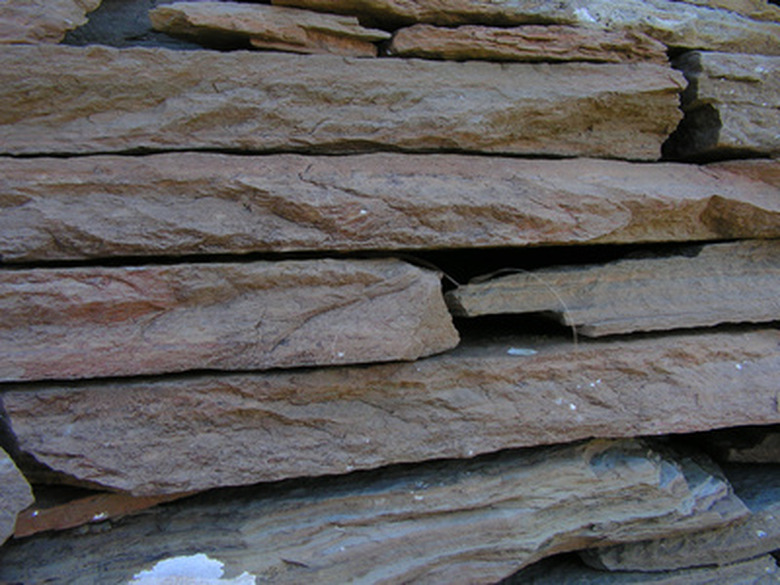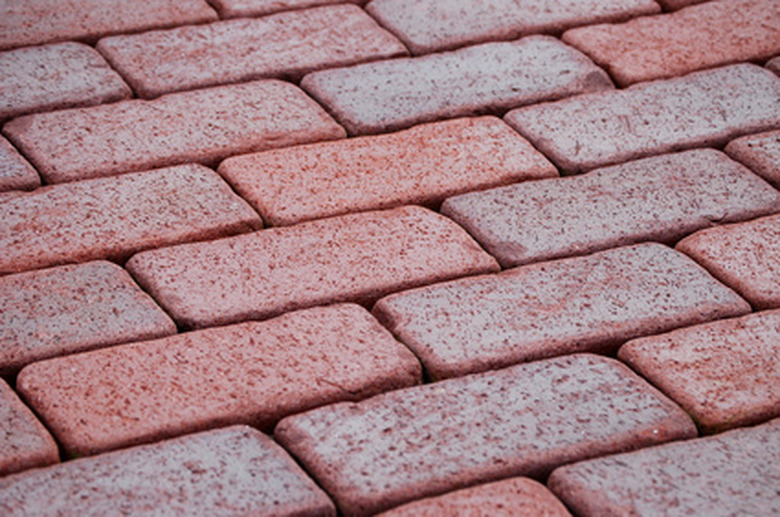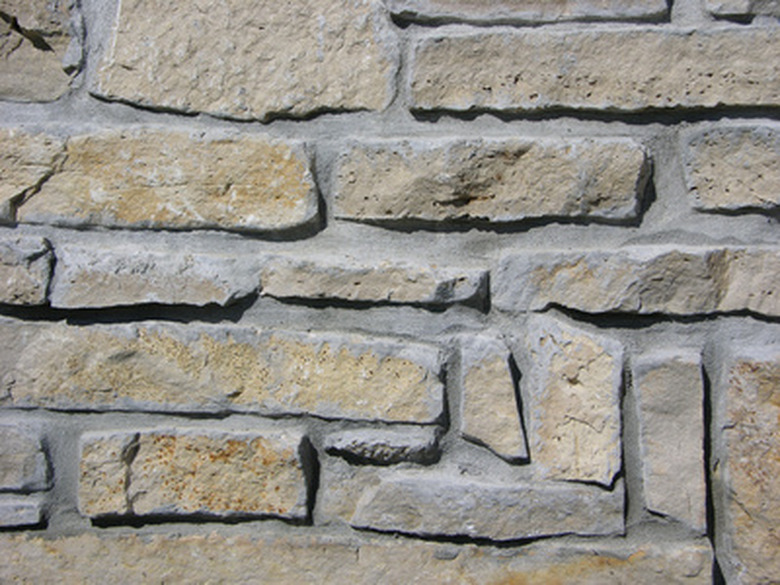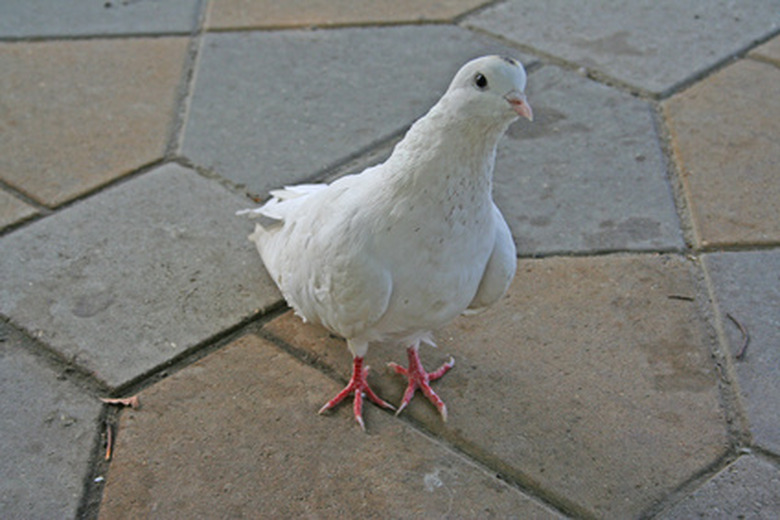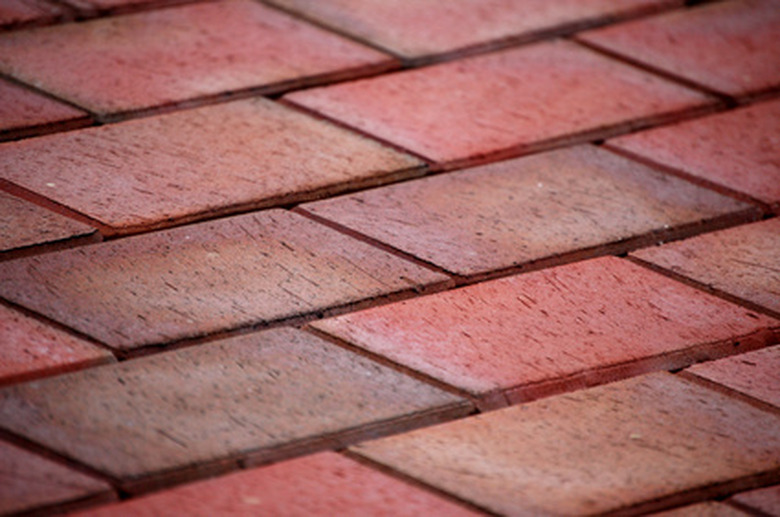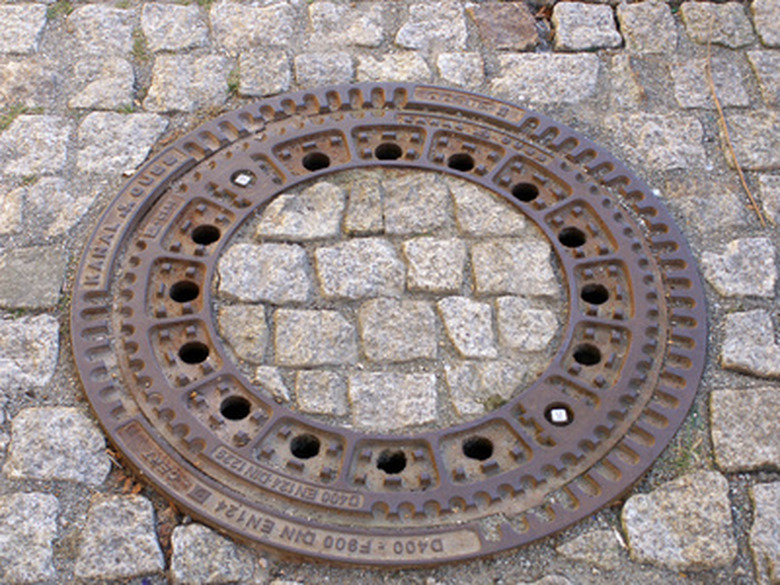What Mortar Works Best With Flagstone Outside?
Mortar is used to hold bricks or rocks in place for a chimney or retaining wall, or in walkways and manholes. A light mortar can secure glass blocks in a shower or hold decorative wall tiles together in a mosaic. The load-bearing capabilities of mortar mixes can vary a great deal, based upon the proportions of ingredients. The majority of experts recommend three different types of mortar mixtures for a flagstone walk able to withstand all types of weather.
Definition
Definition
Mortar is a mixture of sand and cement and, when water is added, it becomes a thick substance used to hold things together, such as walkways or walls. Portland cement is the most common type of cement and is a basic ingredient in concrete, mortar, stucco and grout. It hardens by reacting with water to produce a water-resistant product. The weight-bearing properties of mortar can be greatly increased by changing the proportions of Portland cement.
Benefits of Hydrated Lime
Benefits of Hydrated Lime
This dry, fluffy powder differs from traditional lime. Mortars that contain traditional lime often pop, pit or disintegrate if ingredients aren't carefully proportioned and mixed. Hydrated lime is user-friendly and can be purchased at any building supply that sells cement. It improves the plasticity of the mortar mix, making it easier to work with. Sand and cement do not separate when it's used and the mortar becomes more waterproof. Shrinkage and cracking can be eliminated by the addition of hydrated lime.
Hydrated Lime Mortar Mixture
Hydrated Lime Mortar Mixture
Replacing 10 to 15 percent of the total volume of Portland cement with hydrated lime works well. Mix 1.5 parts Portland cement, 3 parts sand, 0.5 part hydrated lime. Mix only as much mortar as you will use in 1 or 2 hours and do not add more water if mixture starts to get thick. A good outdoor hydrated lime mortar recipe is: 3 buckets of 5 gallon size of fine sand, 6.38 gallons of Portland cement and 1.2 gallons of hydrated lime. Blend these dry ingredients well; then add water slowly until you get a mixture that resembles bricklayers' mortar. It should be smooth with a 'buttery"consistency that holds the imprint of a trowel point.
1:1 Mortar Mixture
1:1 Mortar Mixture
If you decide not to use hydrated lime in mortar for your flagstone walk, a good sturdy mixture is made from sand and Portland cement. Landscapers, accustomed to the extreme fluctuations of Colorado weather, have had satisfactory results mixing 1 part Portland cement with I part sand. Add enough water to make a fairly stiff mixture. Flagstone walks installed with this mortar have survived 25 years with the native stone still firmly in place.
1:3 Mortar Mixture
1:3 Mortar Mixture
Premixed mortar can be purchased which only requires the addition of water. Landscapers often use a mixture of 3 parts of very fine sand with 1 part Portland cement and sufficient water to make a thick paste. The dry materials should be thoroughly turned several times before water is poured into a depression in the center of the mixture. Stir to paste consistency.
